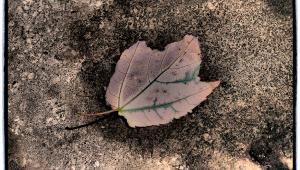Bridging the Gap Between Solid, Process and Web Color Reproduction with PANTONE color bridge™ Page 2
A BETTER TOTAL COLOR SOLUTION
There can be little doubt of the merits of the new PANTONE color bridge. The
bigger guides, bigger swatches, better color matches, and included RGB and HTML
values combine to make PANTONE color bridge a new industry standard from a company
that has been setting the standard in color for decades.
A few things to remember: most (about 98%) of the formulas are different, and you need to be aware that yesterday's PANTONE 466 PC is not the same as today's version. You must make a decision if a better match to the color swatch is more important, or matching something you printed a year ago is critical. (Please note: the "PC" suffix means we are talking about the process simulation of PANTONE 466 C).
Make sure you know how to deal with mapping colors and how your RIP will respond to the potential of different suffixes of the formulas -- keeping in mind that the formula for PANTONE 466 PC is not the same as the formula for PANTONE 466 CVC.
For more than 40 years, Pantone has been providing color-matching solutions for the design and print industry and the PANTONE MATCHING SYSTEM has been an industry standard for as long as most printers can remember. The new PANTONE color bridge guide provides a significant improvement in the way designers and printers communicate color in the digital age. With the information provided here to steer you around potential problems, printers and designers will be able to use this new guide to improve the finished product. And that is everyone's goal.
SIDEBAR
IT'S A JUNGLE OUT THERE
In the world of print design and production, there are many levels of expertise
with color management and a wide divergence in the level of understanding of
the printing process. Even printers are sometimes confused about when and how
to apply color profiles and how to use the basic calibration equipment. At the
same time, many designers are understandably interested in making the best looking
printed piece possible, and sometimes don't know that the way they are
producing files hurts the chances of getting it to output correctly. As many
times as the accusations have been thrown around, it is not true that designers
stay up nights trying to make problems for printers, or that printers are taking
every opportunity available to them to ruin the designer's project.
One thing should be clear from the outset. The problems with color specifications that the PANTONE color bridge guide solves only apply to CMYK workflows. The new product neither has any magical properties to solve other color problems nor does it add any new issues to the mix.
The key to getting good output is to understand the potential problems so they can be avoided. The bottom line? You should not apply a profile to a PANTONE Color specified to print in CMYK color space. But there are other considerations too.
HOW TO AVOID CONFUSING THE RIP
There is a potential problem with some output devices when your RIP sees all
of the different PANTONE Suffix versions as different colors. With spot colors,
the RIP could map each iteration of the color to a separate plate unless the
RIP has built-in tools for remapping the color or the user can manually edit
the color suffix specifications within the original application. Some RIPS do
a good job of mapping the colors correctly and others do not.
Although current versions of most applications have done away with the CV, CVC and CVU suffixes (the C, M and U suffixes replaced them five years ago), many legacy files use the old naming conventions. And designers are still generating files using older programs that in turn use older naming conventions. Although software upgrades could eliminate the problem, prepress operators frequently encounter files where elements on a single page may have the color PANTONE 485 specified as PANTONE 485 CVC, PANTONE 485 C and PANTONE 485 U. There are still many RIPs that will map each of these colors to separate channels, thinking they are actually different colors. While Pantone has licensed many RIP vendors to automatically map all of these colors to a single color channel, and many vendors have included the ability to manually map the colors correctly, the potential for problems remains.
The Pantone-licensed RIPs have Pantone-approved Lab values and typically when a PANTONE Color comes through the data stream, the RIP uses the Lab data for the PANTONE Color. Most of these RIPs deal pretty effectively with the variety of suffixes.
BEWARE OF DESIGN SHORTCUTS
But there is another problem. Many designers simply don't use the color
libraries correctly, selecting PANTONE 485 C where a process simulation of PANTONE
485 is intended. In fact, programs like Adobe Illustrator will allow you to
assign a PANTONE Library Color like PANTONE 485 C and specify it as a spot color,
or to specify PANTONE 485 C to print as a process color. While this can be handy
for the designer, it can play havoc with the production end of the process.
Here's what can happen: All too often, a designer will specify a spot color in an application, even though that color will ultimately be printed with CMYK inks. Then the designer may go back and tell the program it really is a CMYK color, or the pre-press technician may convert all of the spot colors. The software program will use its library to make the conversion. For example, you have a background color panel in QuarkXPress 4. To create the panel, the designer goes to the PANTONE Color Library and selects PANTONE 466, and then clicks the CMYK button so it does not print as a spot color. The same designer has a CMYK image created in Adobe Photoshop CS and wants the background of the image to match the background created in QuarkXPress. Logically, the designer might go to the PANTONE 466 color palette in Adobe Photoshop CS and fill the background with that color. When the photo does not blend in with the background image, the designer wants to know what the prepress operator did to destroy the file! Why don't they match?
As you have already guessed, it is because the color formulas for PANTONE 466 are not the same in QuarkXPress 4 as they are in Adobe Photoshop CS, the reason being that older versions of some software applications might not be using the updated data sets. Simply reading the CMYK values would show this quickly enough, but sometimes these problems are missed until it is too late. To avoid this, users should always check the CMYK values, or make sure that all applications have the same CMYK builds for process simulations of PANTONE Colors. Registered users can download updated palette files for most popular applications from the Pantone Web site free of charge.
A common problem also occurs when creating duotones in Adobe Photoshop where some of the Photoshop versions use "PANTONE Black" as the default name to define the black channel instead of simply naming the color "Black." Again, this can cause problems with the RIP, assigning a separate color to the PANTONE Black channel. The simple fix is to make sure the black printer on a duotone is named "Black" rather than using the default name. The color can easily be renamed in the duotone dialogue box in Adobe Photoshop.
PITFALLS TO AVOID
Perhaps the biggest pitfall to avoid is the fact that PANTONE 466 PC using PANTONE
color bridge does not use the same formula as PANTONE 466 PC using the old PANTONE
solid to process color guide. While the new formula will undoubtedly get you
a closer match to the solid PANTONE 466 color swatch, it will not match the
color you printed on the same job a year ago using the old libraries. It is
important to consider whether matching a previously printed job is more important
than matching the color swatch.
Using color management and color profiles in programs like Adobe Illustrator or Adobe InDesign can actually change the values of colors. When the profile or rendering intent is changed, the ink percentages also change, which effectively means colors keyed to a PANTONE Formula will change along with them.
While that may appear to be an error, profiles are intended to adjust the input from any source to match the specific output printer. The values must be changed to match the actual output. After all, you don't want to print a specific dot percentage so much as you want to attain a spectral match on the finished product. Of course, the real question is: "What data does my RIP actually use?" As noted, Pantone-licensed RIPs use the Lab data for the color. You'll need to know how your RIP actually deals with the file.
When you profile a printer, you are not measuring dots at all, but using a spectrophotometer to measure the saturation and hue characteristics of that printer. Since all printers and presses have different printing characteristics, selecting colors by dot percentages and ink density is really a poor way to do it. Remember that the formulas Pantone uses to match colors are derived from spectral readings and the dot size equivalent is computed from that reading, not the other way around. When output is done to a CTP device according to a press profile, it is almost certain the dot percentages will not be the same as the formula. This is normal. Even though the guide shows the user a color in terms of dot percentages, it is a color we are trying to match, not a dot. The color profile will adjust the dot to best match the desired color on press.
But even if they should be using a spectrophotometer on press, in the real world of printing, a lot of folks are still reading ink dot percentages and ink densities to "control" color. Chasing dot size is a good way to ruin a print job.
PROVE IT YOURSELF
To prove it to yourself, try this test. To keep it simple, use the program you
are most familiar with such as Adobe Photoshop, Adobe Illustrator or Adobe InDesign.
Create a 4" x 4" window and fill it with 100% PANTONE 466. Then
apply different color profiles to it. Use the eyedropper or info tool to check
how the dot percentages of the color block will shift, sometimes dramatically
depending on how different your profiles are.
Color profiles are designed for a specific output device and should only be applied on final output to that device. It is fine to view a photo in the output profile so you can see what the output device will do to the image, but if you actually apply that profile, you are already creating the color transformation. If your RIP recognizes the profile, it should not make the transformation again, but there are problems that can occur here too. The RIP may have its own library of PANTONE Colors and may pull the data from those libraries and replace the data from the native file. This is another place where you need to ensure the proper PANTONE Libraries are installed.
- Log in or register to post comments

































